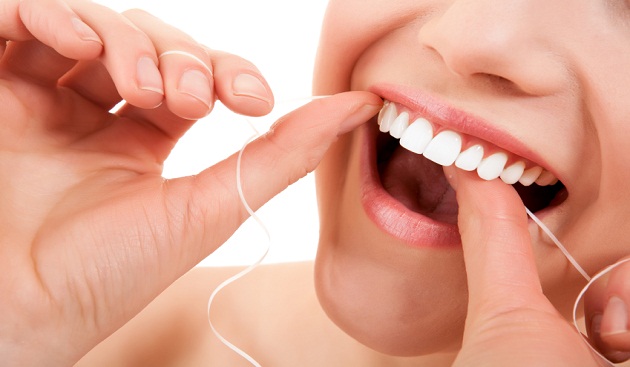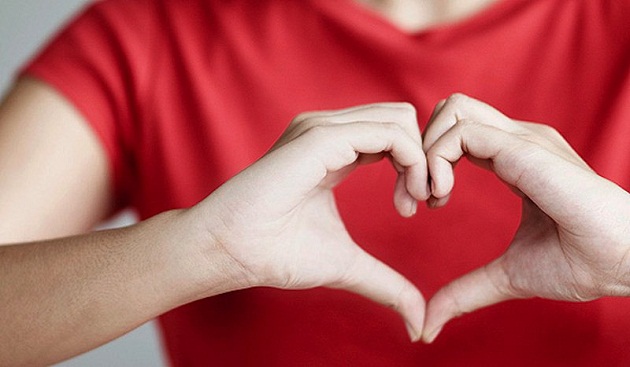Another important tip: to brush the side of molars (last teeth towards the back of your mouth), you will have to remove the brush from your teeth, close the jaw once so as to aid muscle relaxation and then tilt the brush sideways to brush the sides. The usual brushing procedure does not enable you to brush the molars properly due to tensing of muscles while brushing.
Flossing and Massaging
Flossing after you brush can lead to healthy gums. Flossing reaches the spaces between teeth where your brush cannot reach. Flossing regularly improves blood circulation and contributes to healthy gums.
To floss, get a dental floss from your local pharmacy. Then:
- Pull 25 centimeters of floss from the floss reel and hold them tight between your thumb and index finger of each hand.
- Now guide the floss between two teeth and using a sawing motion pull the floss. This action removes plaque (sticky film on teeth formed due to food debris) and food particles lodged between each tooth.
- Repeat this action for all your teeth; even the back teeth.
- Remember to use clean floss for each tooth by pulling fresh floss from the floss reel.
- Once you floss gargle with lukewarm salt water for a complete cleaning and rinsing of the teeth.
- Finally massage your gums with your fingers after brushing so that it stimulates blood vessels and reduces the incidences of gums inflammation.
Other Steps for Oral Hygiene
What about mouth washes? Do they help control tooth decay and reduce gum problems?
‘The usage of mouth wash is only topical. Majority of the mouth washes contain chlorhexidine, which has an antibacterial effect. They are as good as the traditional warm water and salt gargle,’ says the practitioner.
What about Diet?
Diet wise, sticking to a sensible diet rich in fiber, fresh fruits and vegetables, and dairy products, will provide all the essential nutrients required for the teeth. The fiber present in the food will not only improve blood flow in mouth, but also help in removing food particles stuck in between teeth.
So now you know. The right brushing, flossing and massaging technique will prevent gum problems in future. And a regular visit to the dentist preferably once in six months will detect early gum diseases like gingivitis, and prevent complications.
And to sign off, for better oral hygiene follow these tips.
- Night brushing is very important and so don’t skip it.
- Older people will benefit a lot from salt water gargle after their meals.
- If you happen to eat sugar rich foods and you are unable to brush your teeth make sure you gargle your mouth thoroughly. Also drink plenty of water.
- Flossing is better than your tooth pick.
- Teach young children the importance of brushing. According to IDA report nearly 60% to 90% of school-going children suffer from dental caries.
- Tongue cleaning is also an important part of oral hygiene. Regular tongue cleaning with a tongue scraper can decrease the incidence of gum diseases and tooth decay.






